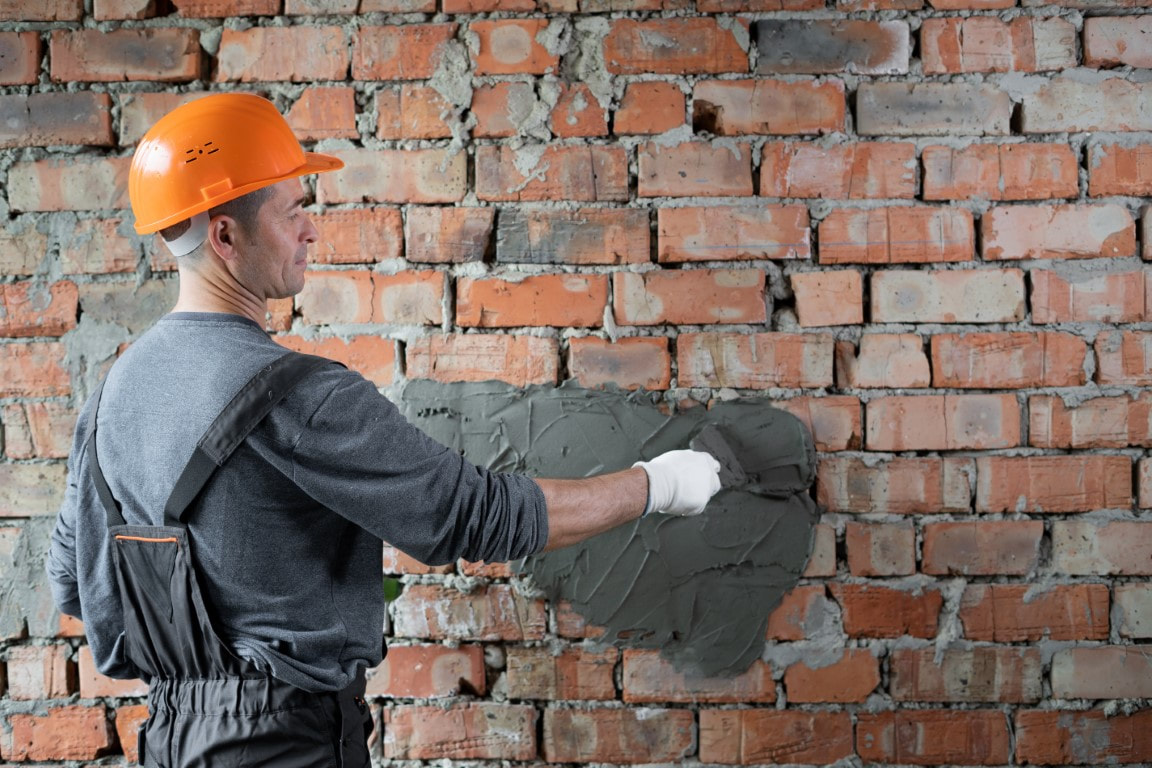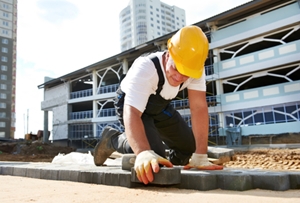Trusted Tuckpointing Services for Fixing Brick and Stone Surfaces
Trusted Tuckpointing Services for Fixing Brick and Stone Surfaces
Blog Article
Unlocking the Secrets of Lasting Masonry Construction Practices for Eco-Friendly Structures
In the world of contemporary construction, the pursuit of lasting practices has actually ended up being vital. Among the myriad methods to environmentally friendly structure, lasting stonework building and construction stands out as a tried and true and resilient approach that holds a riches of untapped capacity. From the selection of materials to cutting-edge building strategies, the tricks to achieving sustainability within masonry building and construction are diverse and intriguing. By checking out the advantages, materials, methods, and future trends of sustainable stonework, a much deeper understanding of exactly how these techniques can form the future of environmentally friendly structures arises.
Benefits of Lasting Masonry Construction
Welcoming sustainable masonry building and construction practices not just minimizes environmental influence however also supplies lasting financial benefits to builders and areas. By utilizing products like recycled bricks, obstructs, and rocks, home builders can substantially decrease the carbon footprint of their tasks while promoting source efficiency. Furthermore, lasting masonry building and construction methods, such as correct insulation and thermal mass properties, can enhance energy effectiveness within structures, leading to minimized operational costs over time.
Additionally, the durability and durability of stonework structures add to long-term economic advantages. Buildings built using lasting stonework techniques often call for much less maintenance and repair work, translating to cost savings for contractors and homeowner. The durability of stonework materials also makes certain that frameworks stay steady and protected, reducing the demand for frequent remodellings or replacements.
Eco-Friendly Masonry Materials
Making use of green stonework materials is a pivotal step in the direction of enhancing the sustainability of building practices and lessening ecological influence while making best use of lasting financial benefits. Sustainable masonry products are sourced, generated, and made use of in a manner that decreases general environmental effect. Materials such as recycled bricks, recovered rock, and sustainable cinder block are ending up being progressively popular options for eco-conscious builders. Recycled bricks, for example, not just divert waste from land fills yet also require less power to produce compared to brand-new blocks. Recovered rock offers an unique aesthetic appeal while decreasing the demand for brand-new quarrying. Lasting concrete obstructs integrate recycled aggregates and may feature enhanced insulation buildings, adding to energy effectiveness in structures.
Furthermore, natural materials like adobe, rammed planet, and straw bundles give exceptional thermal mass residential properties, reducing the demand for heating and cooling energy. These materials are often locally readily available, promoting regional economic climates and reducing transportation-related carbon emissions. By selecting green masonry products, building and construction jobs can substantially reduce their environmental footprint and contribute to the production of much healthier, extra lasting built environments.
Energy-Efficient Masonry Strategies
Energy concrete driveway cost performance plays an important role in improving the sustainability of masonry building and construction practices. By implementing energy-efficient stonework techniques, builders can significantly minimize the total energy intake of a structure, bring about reduced functional expenses and a smaller sized environmental impact. One vital energy-efficient stonework strategy is making important site use of thermal mass, which entails incorporating thick products like concrete or brick into the building's framework to absorb and save heat. This assists manage indoor temperature levels, lowering the requirement for mechanical heating and cooling down systems.

Developments in Sustainable Masonry
Recent developments in lasting stonework techniques have actually produced ingenious techniques that are improving the building and construction market. One such innovation is the development of self-healing concrete, which makes use of microorganisms installed within the concrete to heal cracks autonomously. This innovation not just minimizes maintenance prices however likewise improves the durability of stonework structures, adding to their sustainability.
One more significant development is the usage of recycled accumulations in masonry building and construction - masonry contractor. By integrating materials such as crushed ceramic waste or recycled glass into concrete mixes, contractors can reduce the ecological effect of construction projects while keeping architectural integrity. This technique not only draws away waste from garbage dumps yet likewise conserves natural deposits, making it an essential improvement in lasting masonry building
Furthermore, the integration of electronic layout tools, such custom concrete slabs as Building Details Modeling (BIM), is revolutionizing the method stonework frameworks are planned and built. BIM permits more accurate estimations, reduced material wastefulness, and boosted energy effectiveness, inevitably leading to more lasting structure practices. These technologies collectively symbolize a promising future for sustainable stonework construction in the era of green structures.
Future Trends in Stonework Sustainability
With the innovative strides made in lasting stonework techniques, the future trends in stonework sustainability are positioned to further transform the building market. One of the crucial fads forming the future of stonework sustainability is the increased integration of innovation. Innovations such as Structure Information Modeling (BIM) and virtual fact simulations are being used to enhance masonry construction processes, resulting in reduced product waste and enhanced energy effectiveness in buildings.
Furthermore, the advancement of novel lasting products is set to play a significant role in improving the eco-friendliness of masonry construction. masonry contractor. Innovations like self-healing concrete, recycled accumulations, and bio-based binders are getting traction for their ability to decrease environmental effect while maintaining architectural integrity

Verdict
In verdict, sustainable stonework building techniques provide various advantages for environment-friendly buildings. masonry contractor. Innovations in sustainable masonry are constantly being established to even more boost the ecological performance of structures.
Report this page